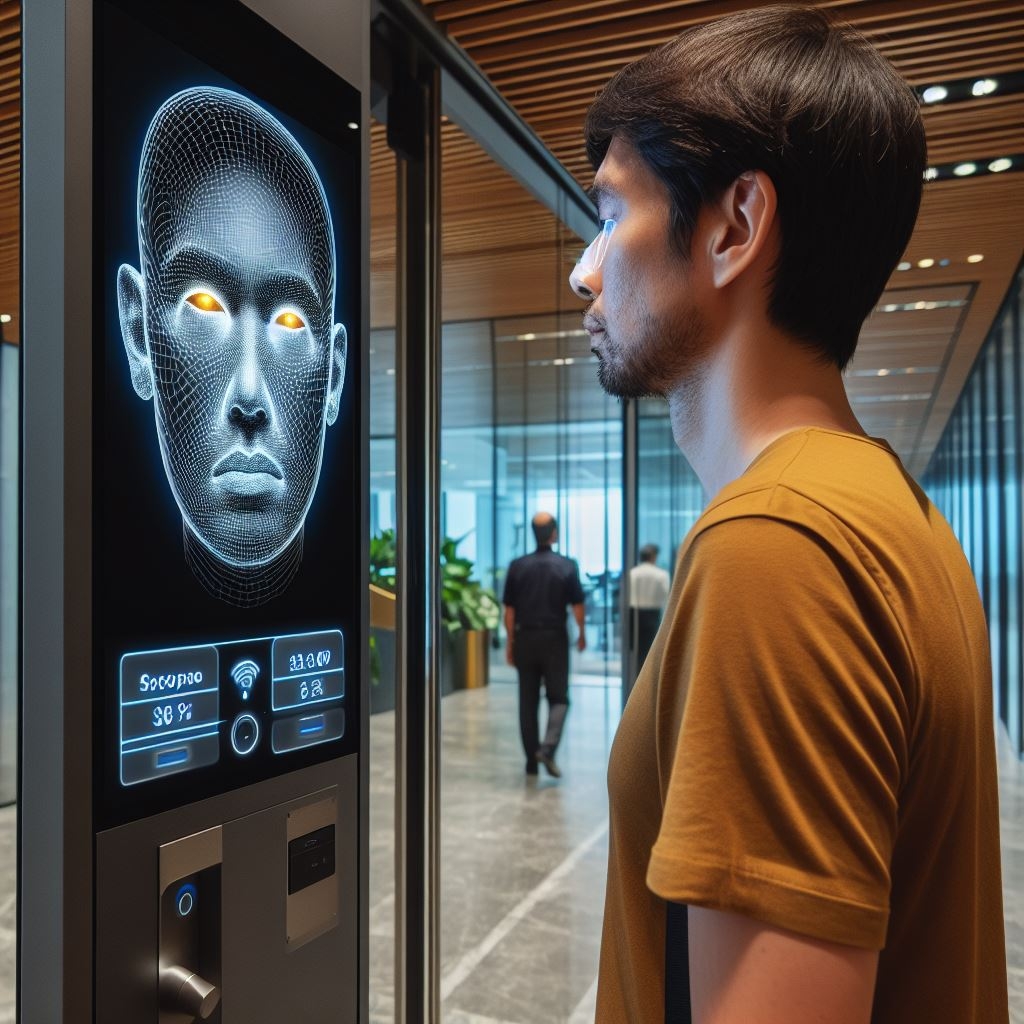Touchless Access in Health Protocols: A Necessity in Today's Landscape

In the wake of global health concerns, traditional access methods pose risks. Face recognition door access technology emerges as a compelling solution. By eliminating physical touchpoints, it aligns seamlessly with stringent health protocols. Real-time identification ensures that only authorized personnel gain entry, reducing the transmission risk associated with shared access cards or touchpads.
Benefits:
-
Risk Mitigation: Face recognition reduces the risk of disease transmission, making it a preferred choice in health-conscious environments.
-
Efficient Monitoring: The technology allows for real-time monitoring of individuals entering and exiting spaces, contributing to effective contact tracing if needed.
Applications:
-
Workplaces: Offices implement face recognition to safeguard employees, ensuring a secure and hygienic work environment.
-
Public Spaces: Transport hubs and public buildings adopt touchless access to prioritize the safety of individuals accessing shared spaces.
Efficiency Meets Safety: The Impact of Face Recognition on Access Control
Face recognition not only enhances safety but also streamlines access control processes, fostering efficiency. The rapid and secure identification of individuals ensures a seamless entry experience while adhering to health guidelines. The marriage of efficiency and safety positions face recognition as an indispensable tool in access management.
Benefits:
-
Swift Entries: Face recognition enables rapid access, reducing congestion at entry points and ensuring a smooth flow of people.
-
Contactless Transactions: Access cards and fingerprint scanners are replaced by a touchless alternative, minimizing physical contact and potential contamination.
Applications:
-
Education Institutions: Schools and universities leverage face recognition for secure access, balancing safety with efficient student and staff movement.
-
Public Venues: Concert halls, stadiums, and event spaces embrace technology, providing secure access without compromising efficiency during large gatherings.
Navigating Challenges: Privacy and Advancements in Face Recognition
As face recognition gains prominence, concerns about privacy and accuracy linger. However, ongoing technological advancements address these challenges. Innovations in facial recognition algorithms enhance accuracy, and privacy-centric features are integrated to allay apprehensions, ensuring a balance between security and individual rights.
Challenges:
-
Privacy Concerns: Critics raise concerns about the potential misuse of facial data, prompting the need for stringent privacy regulations.
-
Accuracy Issues: Early iterations faced challenges in accurately identifying individuals, leading to improvements in algorithmic precision.
Advancements:
-
Enhanced Accuracy: Continuous refinement of algorithms contributes to heightened accuracy, minimizing instances of misidentification.
-
Privacy Features: Cutting-edge face recognition systems incorporate privacy-focused features, such as data encryption and user consent mechanisms.
Success Stories: Case Studies in Implementing Face Recognition
Industries and sectors globally have witnessed tangible benefits from adopting face recognition technology. Case studies highlight successful implementations, emphasizing the measurable outcomes and positive impact on security, efficiency, and overall operational efficacy.
Industries:
-
Corporate Security: Offices experience enhanced security and streamlined access, reducing unauthorized entries and improving overall security posture.
-
Transportation Hubs: Airports and public transit systems witness improved passenger flow, with face recognition contributing to timely boarding and seamless transit experiences.
Future Trends: Innovations Shaping the Tomorrow of Face Recognition
The journey of face recognition doesn't end with current capabilities. Future trends promise even more sophistication and integration with emerging technologies. Advancements focus on refining accuracy, enhancing user experiences, and addressing evolving security challenges, solidifying face recognition's role in the future of access control.
Trends:
-
Biometric Fusion: Integration with other biometric modalities for heightened accuracy and multi-layered security.
-
AI-Driven Enhancements: Artificial intelligence contributes to real-time adaptation, ensuring the technology evolves dynamically to new scenarios and challenges.
Applications:
-
Smart Cities: Face recognition becomes integral to the development of smart city infrastructure, enhancing public safety and security.
-
Cross-Industry Integration: From healthcare to retail, face recognition finds applications across diverse sectors, contributing to a more secure and efficient future.
In Conclusion: Paving the Way to Secure, Hygienic Environments
In conclusion, face recognition stands as a beacon of progress in access control. It symbolizes a touchless revolution that prioritizes both safety and efficiency. The fusion of advanced technology, real-time monitoring, and future-driven innovations cements face recognition as a transformative force, paving the way for secure, hygienic environments globally.
Key Takeaways:
Touchless Revolution: Face recognition marks a paradigm shift in access control, promoting touchless solutions in the era of health consciousness.
-
Balancing Act: The technology strikes a delicate balance between ensuring safety through contactless access and streamlining processes for optimum efficiency.
-
Ongoing Evolution: The face recognition landscape continually evolves, addressing challenges, incorporating advancements, and shaping a future where security and convenience coexist seamlessly.
- Industry
- Art
- Causes
- Crafts
- Dance
- Drinks
- Film
- Fitness
- Food
- Games
- Gardening
- Health
- Home
- Literature
- Music
- Networking
- Other
- Party
- Religion
- Shopping
- Sports
- Theater
- Wellness
- News


